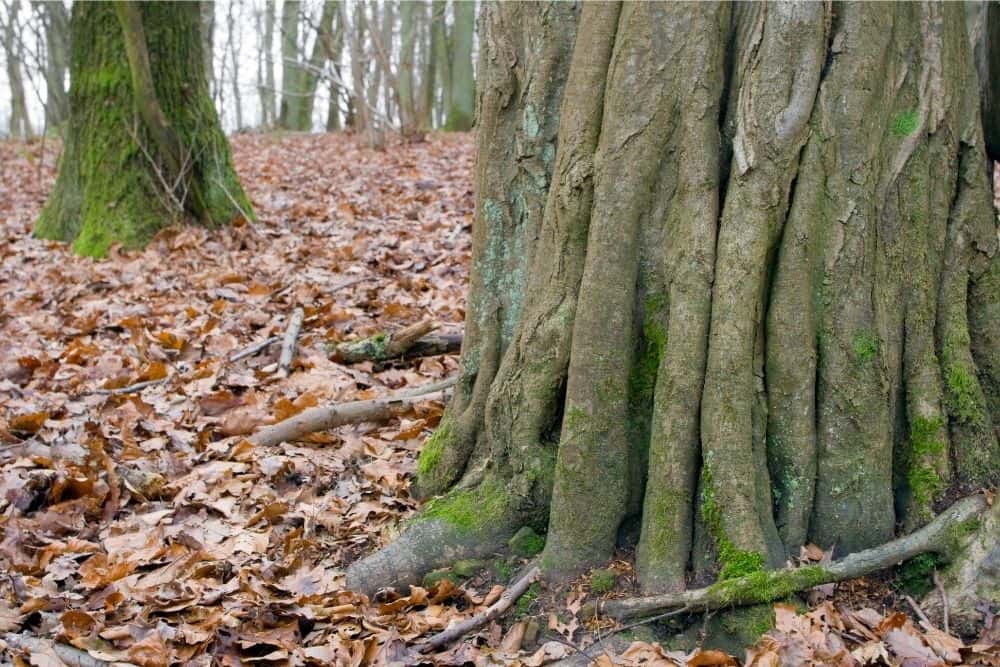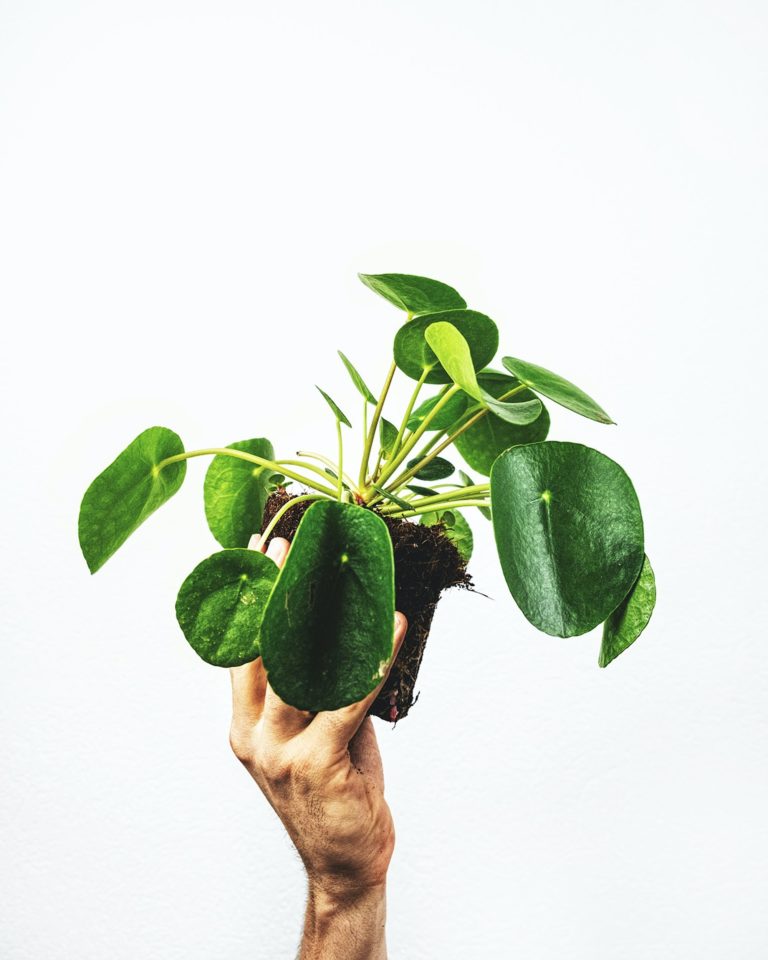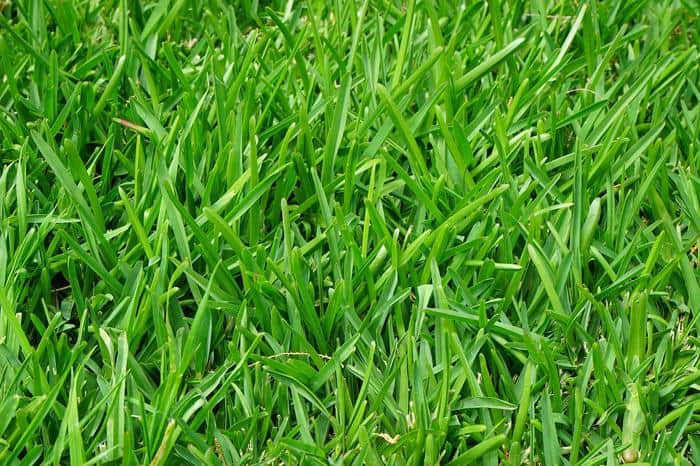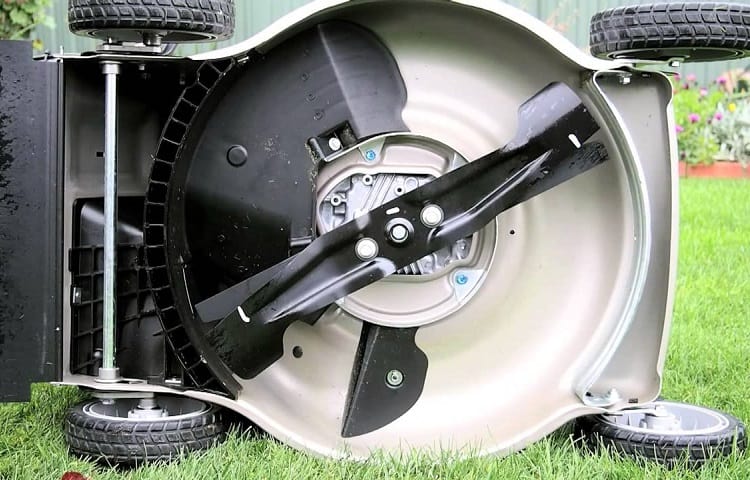Trees With Non-Invasive Roots – Small, Evergreen, And Shade Trees
Tree Roots And The Damage They Do
Trees usually come with two different types of root systems – the tap root system, and the adventitious root system.
Both are very different from each other and have different advantages and disadvantages to grow on your property.
Tap roots grow straight down vertically, with long straight roots that have many smaller ones growing out to the sides that stay within the soil.
On the other hand, adventitious root systems spread wide and sprawl across the surface of the soil in its search for nutrients.
The difference occurs because most adventitious trees grow in areas where water is harder to find so these trees grow longer, far reaching roots to help it find all the nutrients and water it needs to survive.
Trees with tap root systems grow in areas where water is more available so they have a shallower root system that is less invasive because they typically do not need to look far for water and nutrients.
This is why trees with tap root systems are better for you to grow on your property. Their root systems are shorter and less likely to spread across the ground in search of water.
Trees with adventitious root systems tend to break or distort man-made structures like walls, pipes, and paving in order to find water – so they cause damage to your property.
Trees like hybrid poplars, willows, and elms are notorious for having invasive root systems that damage pipelines and cause leakages, costing hundreds of dollars in damage!
Make sure you avoid planting trees like these near your property – and instead, choose from some of the trees listed below.
These trees have non-invasive root systems and still help make your backyards and properties look green and lush.
Small Trees With Non Invasive Roots
Here are some small trees that have non invasive roots:
Japanese Maple Tree
Our first recommendation is the Japanese Maple, a tree that comes in hundreds of varieties.
Each variety can come in a different size, with different leaf shapes and colors, ranging from green to purple.
Japanese Maples can grow between a range of 3 feet to 30 feet, so you will need to consider which size is best for your property.
There are company and dwarf varieties that are perfect if you only want to bring a small tree to your landscaping, or there is the slightly taller acer palmatum that is sure to bring a beautiful slash of warm color to your garden.
Dwarf Korean Lilac
The Dwarf Korean Lilac is an unusual tree that grows straight up on one thin trunk and naturally shapes its leaves and buds close, resembling a ball on a stick.
The buds that bloom beautifully in the spring also emit a gorgeous fragrance as soon as they open.
They are also a soft lilac color, hence the name, which makes this tree a sight to behold and a perfect addition to your plant beds.
Dwarf Korean Lilacs grow better in colder climates so if you live in a particularly warm state, you may struggle to grow your Dwarf Korean Lilac.
They range from 4 feet to 6 feet tall, meaning that this compact tree will not have a huge root system that will tangle with your underground pipes.
Star Magnolia
Star Magnolia trees are one of the most popular trees amongst gardeners and landscapers.
This is not just because of their non-invasive root system, but also because this tree is one of the most showy and eye-catching.
Magnolias are known for their blooms, and Star Magnolia trees practically burst with white, star-shaped flowers weeks before other flowering trees and shrubs in spring.
This beautiful tree grows in a range between 15 to 25 feet tall, and is easy to plant and maintain.
Make sure you pick a sunny spot and water during times of drought, and you will have a beautiful flowering tree flourishing in your own backyard.
Kousa Dogwood
This tree is also sometimes known as the Japanese Strawberry tree or as Japanese Dogwood, and is very attractive to the eye.
It typically flowers small white flowers every spring that grow on branches that spread horizontally from the upright trunk.
They grow rather slowly and take a few years to reach the heights of 15 to 25 feet tall.
Although its root system is not particularly large, Kousa Dogwoods do require a lot of moisture throughout the warmer seasons.
This can be easily tackled through making sure there is plenty of mulch around your Kousa Dogwood tree, and that you water it regularly.
This way, you can have a beautiful focal point in your garden that does not attack your water containers or pipelines.
Crabapples
Our final small tree on our list is the Crabapple tree.
Crabapples are a very popular ornamental tree used by gardeners and landscapers as they stay quite small, even after they mature, sometimes reaching a maximum height of 14 feet.
They bloom early in the spring (which type of flower or fruitlets depends on which variety of Crabapple you choose) and provide gardens with a bit of color early on.
It is easy to see why Crabapple trees are commonly found across the States, and this gorgeous tree is small and easy to care for.
Evergreen Trees With Non Invasive Roots
If you are looking for a tree that stays lush and green all year round, then here are some evergreen trees that feature non invasive root systems so you can get the best of both worlds.
Olive Tree
Olive trees have a rich history and are one of the oldest cultivated trees in the world.
Not only do they look incredibly unusual, with silver foliage and garbled trunks, you can also buy bountiful olive trees that can grow olives for you to harvest and use.
Olive trees are not the most beautiful trees, but they stay green all year long and are available in full varieties (these grow between 15 and 30 feet tall) or dwarf varieties (these grow 6 to 8 feet tall).
They also grow better in hot, dry climates, so if you live somewhere hot but still want a green backyard, then growing an olive tree is something you should consider.
English Holly
Famous for their spiky leaves and association with a certain jolly holiday, the English Holly tree is a classic addition to your landscaping.
They grow iconic dark green leaves that are sharp, and thrive in colder climates.
As for the roots, while the taproot does grow deep, the lateral roots are non invasive and do not spread very far.
This means you can grow row after row of English Holly trees to make hedges along a perimeter, or just grow one as a point of interest.
Australian Willow
This quick growing tree can be extremely tall and wide, reaching heights at a maximum 35 feet tall and can grow to be 30 feet wide!
However, the Australian Willow is a tree that stays green all year round so you will always have that lush color on your property.
It best grows in warm and dry areas with little rainfall, so it will survive fine in dry conditions.
The only drawback is that this tree can be huge so make sure you have enough room to grow one before you start planting.
Hollywood Juniper
For the perfect tree to use for borders and perimeters, you should look into using Juniper Hollywood trees.
These iconic trees stay their dark green color all year round and are used by landscapers and gardeners for a variety of usages – hedges, topiary, windbreak, or foilage.
They are great for fun topiary designs, as many master topiarists are capable of creating some amazing pieces of art out of these trees.
You can use them to border your property and use them as a privacy screen against your neighbors, so you can enjoy your backyard in peace.
Hollywood Junipers grow better in warmer conditions as they need a lot of sun to grow. They also can grow as high as 30 feet, but can be easily pruned so they do not grow too wide.
Bronze Loquat Tree
The Bronze Loquat tree is a beautiful evergreen tree that can bring a touch of ‘exotic’ to your property. Its leaves can grow to be 10 inches long, and they vary from dark green to red on the same tree.
It even has flowers during the winter, even though the leaves stay all year long, making this one of the most eye-catching trees.
As for height, the Bronze Loquat tree can grow up to 30 feet tall and 30 feet wide, so make sure you have a lot of room on your property before you plant one.
Despite their large size, their root system is still non invasive so you can enjoy this tree without worrying that it will cause you a lot of distress later on when it’s fully grown.
Shade Trees With Non Invasive Roots

Trees are a great way to bring some shade to your garden so you don’t burn to a crisp every time you step outside in the sunshine.
They’re also great to help shade your plants who struggle with too much sunlight, so if you are in need of some non-invasive shady trees, then here are our recommended few.
Amur Maple
The Amur Maple is an amazing ornamental tree due to its colorful foliage.
This tree produces some amazing orange and red leaves during the fall season, bringing some vibrancy to your property well into the year.
They also provide an excellent amount of shade as Amur Maple trees can grow 30 feet tall and spread about 10 feet wide.
Unfortunately, while you don’t have to worry about this tree damaging your pipes and infrastructure, you are likely to worry about it suffering from fungal and bacterial diseases.
Amur Maple trees are vulnerable against diseases like anthracnose and crown all, meaning that you may have to maintain and care for your Amur Maple tree a lot to keep it healthy.
Southern Sugar Maple
Another maple tree on our list, this tree is known for its height as the Southern Sugar Maple can grow up to 70 feet tall!
That is a huge tree that can provide more than an ample amount of shade to your backyard.
Also known as the Florida Maple, the Southern Sugar Maple is a deciduous tree that grows small yellow flowers in the spring and drops its leaves in the fall season.
Like with the Amur Maple, this tree is also susceptible to anthracnose, but it has a non-invasive root system and grows tall enough to shade your backyard space.
American Hornbeam
The American Hornbeam makes for a great permanent backyard tree as it can live for three centuries!
It’s dark green leaves bring a beautiful splash of color to your garden, and in the winter, they can turn to various shades of red and yellow for a bit of variety.
American Hornbeam trees can grow up to as high as 30 feet tall.
Despite its height, this tree still has a non-invasive root system that is unlikely to damage your infrastructure and property.
Chinese Pistache
The Chinese Pistache tree is a great choice if you want some shady patches in your backyard.
This tree is known for producing dense foliage and can grow 35 feet wide at full maturity!
Not only that, but the Chinese Pistache is a stunning tree that features red-orange drupes to bring a little color to your home.
The only issue is that in the winter, these leaves will all fall off and litter your backyard.
However, the Chinese Pistache is still a great choice for a shade tree as its roots do not grow far from the root ball, meaning that you won’t have to worry about invasive roots with this tree.
Trident Maple
And finally, we have the Trident Maple.
This tree originated in China and Japan, and is one of the most popular trees for bonsai.
It grows best in sunny and air places, and its leaves turn from a bright green to a range of fiery colors during the fall.
It is known for its fat trunk and can grow up to 35 feet tall, and 25 feet wide.
This huge amount of foliage could provide a lot of cover and shade to your backyard should you choose to plant a Trident Maple on your property.
You also don’t have to worry about its roots as this tree is known for having non-invasive roots, making it a perfect tree for your property.
Conclusion
And there you have our recommendations for non-invasive trees. As you can see, there are many different trees that all benefit from having non-invasive root systems so you have an ample amount to choose from.
Happy gardening!






